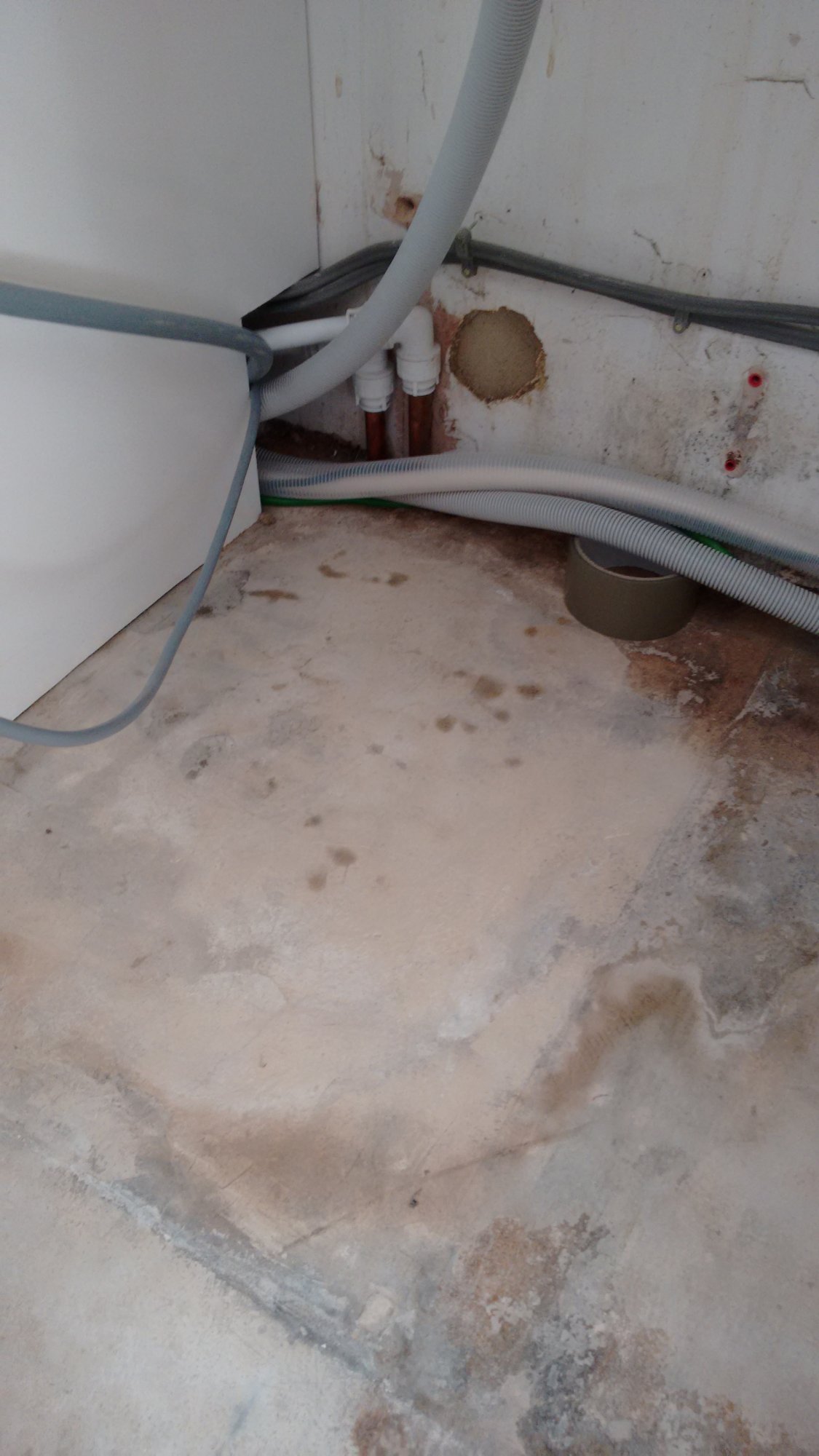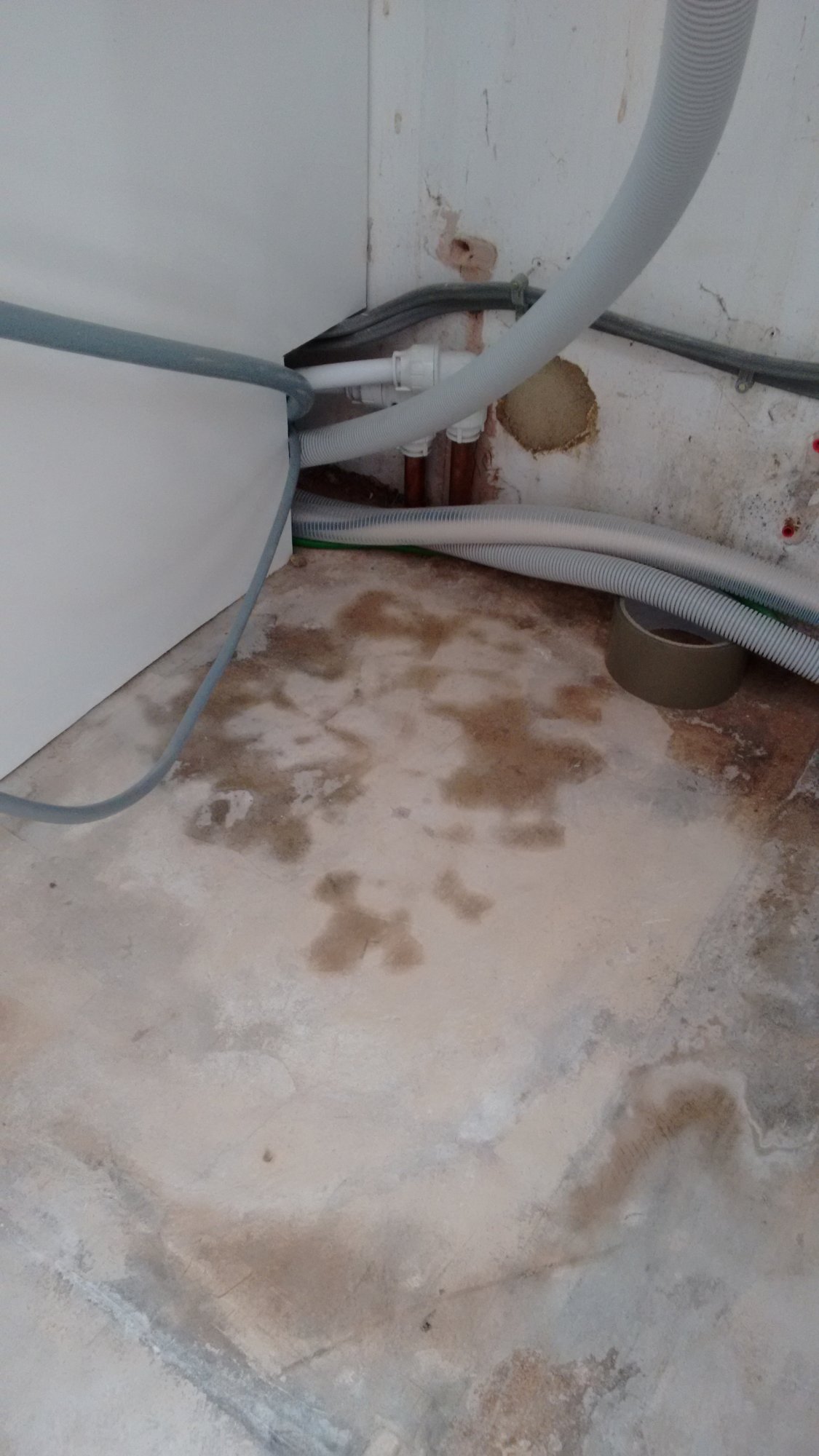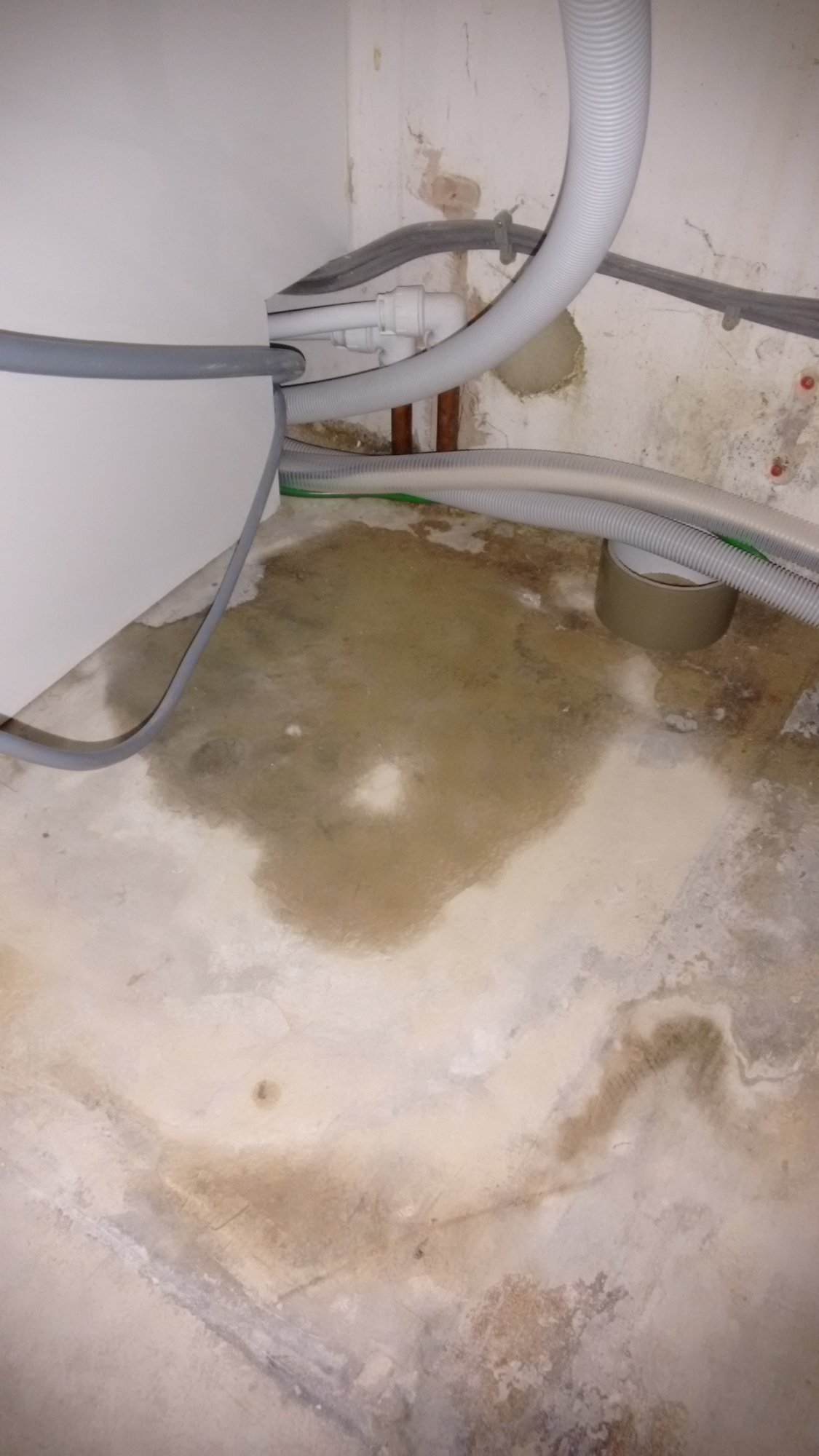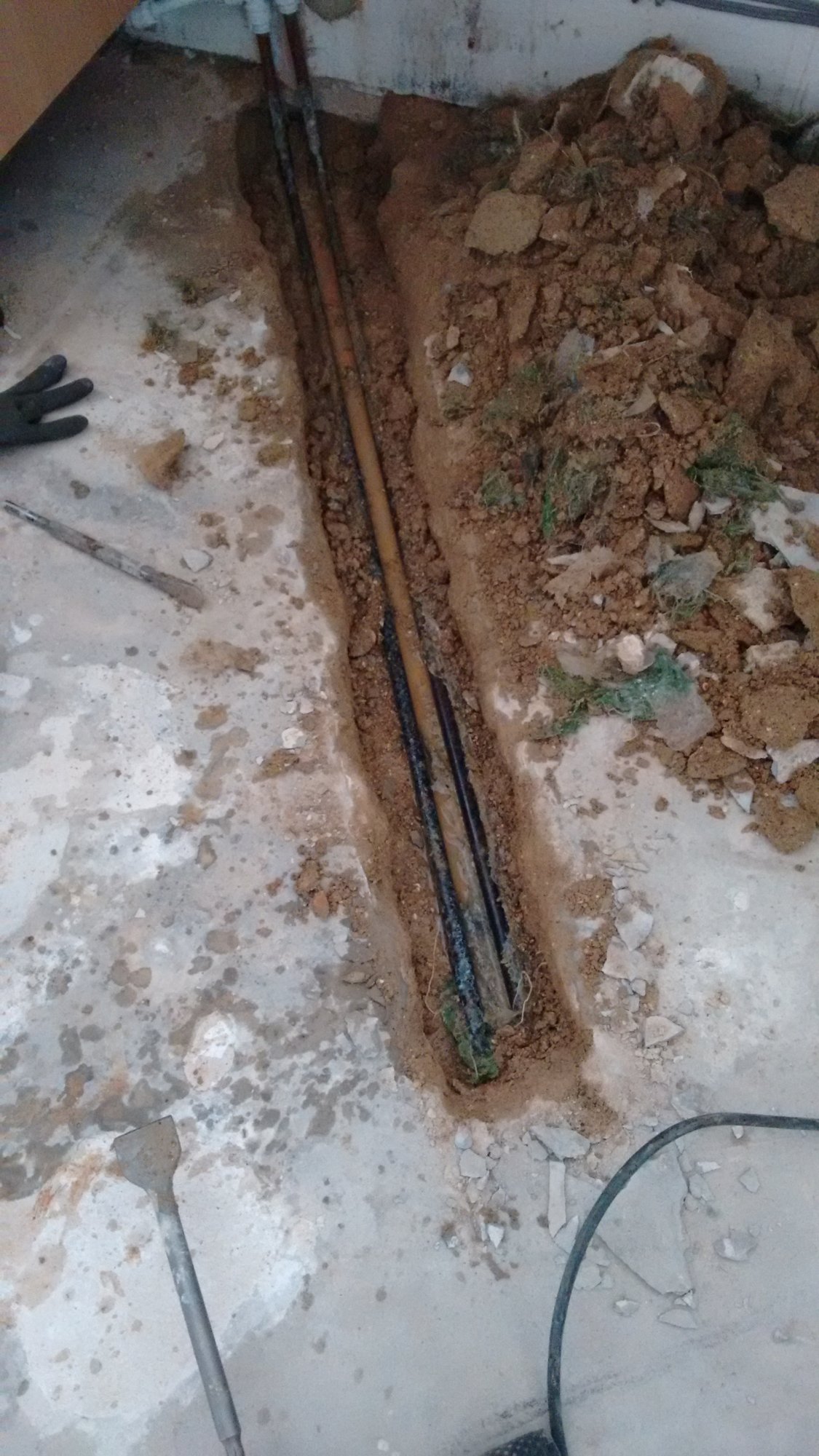We've recently had a new kitchen installed - Yay!  , but have found a damp patch on the concrete floor - Boo
, but have found a damp patch on the concrete floor - Boo 
The damp patch is located just in-front of the hot & cold water feeds, which are buried under the concrete. The pipes have been there for about 25 years (part of an extension), and we've only been at the property a couple of years and only just noticed the problem. We've had our builder inspect the pipes, which are wrapped, and the wrap/lagging material is dry where the pipes come up out of the ground (and down to about 1-2 inches). He felt that it is unusual for it to be the pipes as the wrap/lagging would be soaking wet, which it's not.
We dried the patch out this morning, but within minutes the patch returns (see pictures). There aren't any other signs of damp patches elsewhere.
Any advice on this is greatly appreciated.
Dried:
After a few minutes:
Damp patch reoccured:
The damp patch is located just in-front of the hot & cold water feeds, which are buried under the concrete. The pipes have been there for about 25 years (part of an extension), and we've only been at the property a couple of years and only just noticed the problem. We've had our builder inspect the pipes, which are wrapped, and the wrap/lagging material is dry where the pipes come up out of the ground (and down to about 1-2 inches). He felt that it is unusual for it to be the pipes as the wrap/lagging would be soaking wet, which it's not.
We dried the patch out this morning, but within minutes the patch returns (see pictures). There aren't any other signs of damp patches elsewhere.
Any advice on this is greatly appreciated.
Dried:
After a few minutes:
Damp patch reoccured:









